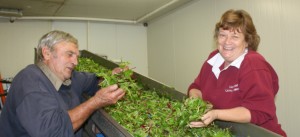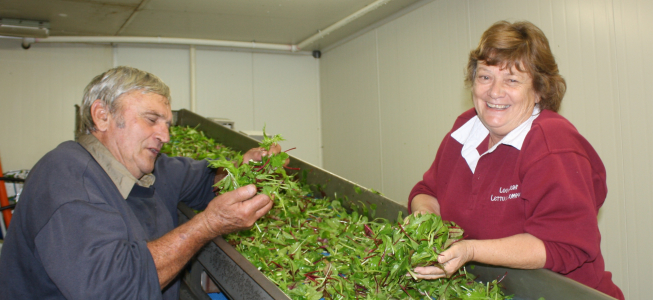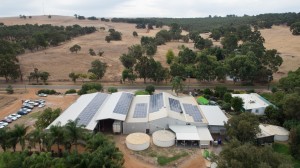
The Loose Leaf Lettuce Company doesn’t need much by way of introduction. A Gingin success story, the company now harvests as much as 5 tonnes of lettuce
a day. This local business sets a great example within their region in both their professionalism and their innovative approach to manufacturing efficiencies.
Owned and run by Maureen and Barry Dobra along with son Kevan it’s a family concern. It has come a long way since its early days when daughters Deanne and Simone, who were one of the first to pioneer the market of loose leaf lettuce, founded the business. In the beginning the girls did everything by hand but when travels sent them off-farm their father and brother started the journey of mechanising the process.
Since then, the Dobras have had a passion for process re-engineering, and their investment in machinery and technology is significant. From the stainless steel washer, conveyor and packing machine – which looks like something out of a Star Wars movie – to the Alltech Hydro-Vac ®cooling system, the machinery is impressive.
According to Maureen, “As growers and primary producers we can’t demand higher prices for our products. The markets and the supermarkets are controlling the prices. So you have to make efficiencies wherever you can.” This pursuit of efficiency has recently taken a new level with two new family members who have joined the business.
Son Peter and daughter-in-law Laura, who have IT backgrounds, now work in the business driving research and development as well as seeking new ways
of cost efficiency. Daughter Simone has returned, looking at the financial aspects of the business.
Their latest investment has been a 100 KW solar system, covering approximately 1200 square metres of their roof. The system was installed by Solargain and according to Paul Hart of Solargain, “The system was designed according to the specific load profile of the business energy consumption. Also the Loose Leaf Lettuce Company was able to claim almost $75,000 from the STC Government Incentive program, which covered around a quarter of the cost of the system – maximising their return on investment.”
They are already enjoying the rewards – their energy bills going from $14,000 per month down to $7,000 in March. With a finance cost of $2,300 per month over 10 years, they are confident they’ve made a good decision.
The way Maureen sees it, “I buy a car on HP for 5 years and in 5 years time it is worth half the value. With the Solar panels we expect in 3 – 5 years time I will have paid for it and after that it is making me money.”
Finding energy savings
For The Loose Leaf Lettuce Company the journey to solar started a few years ago. With the prospect of a carbon tax they were keen to look at energy efficiencies. With the help of an energy consultant they started to shop around and seriously analyse their energy usage and uncovered many ways they could save money.
First their savings came from behavior changes. Maureen recalls, “We repaired cool room door seals, we trained staff to shut the door, turn lights off etc. The savings in turning off cool rooms surprised us. We thought it would be cheaper to keep it running rather than on and off. But the data showed it was actually cheaper to shut them off and turn on again. “
Their energy use data showed they made a 3% saving just from those minor changes in behavior.
The energy consultant also introduced them to EnerNOC who offered a “demand response” system, which encourages large commercial agricultural energy users to reduce power for 6 hours over 4 days in return for financial incentives..
Under the program they are rewarded $7,000 a year on the energy that they reduce.
According to Maureen, “Initially, our interest in enrolling in demand response was based on the financial benefits of the program. However, after an EnerNOC representative explained the added value of gaining real-time energy monitoring, it was exciting to see how we use, or (at times) waste our electricity and when our usage was less or more.
You get a notification and you have to cut your usage – which to us might mean moving lettuce in one coolroom, turning off refrigeration units.”
Since joining the program, they have not had to respond to a critical event as yet, but they have been able to put their energy reduction plan into action during the required annual audits.
This knowledge of energy usage has not only been invaluable in their journey to solar but it also provides the data they need to competitively shop for energy which is likely to be an ongoing requirement to keep energy costs down when the sun isn’t shining.









